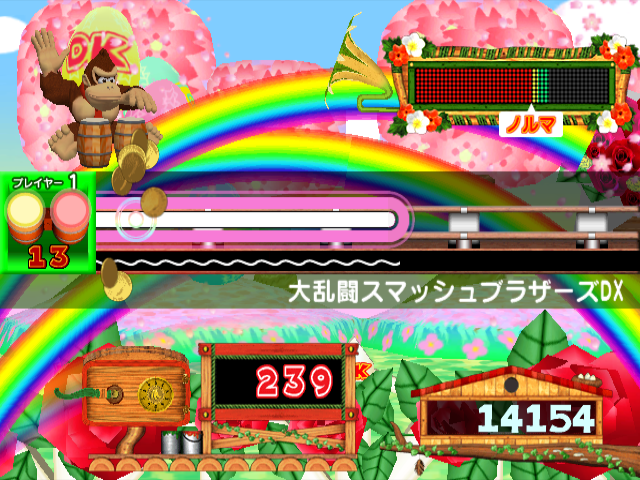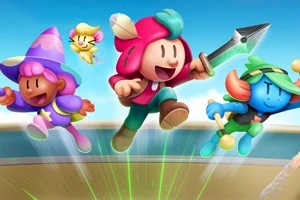Throwback Thursday #21 - The Journey to Donkey Konga
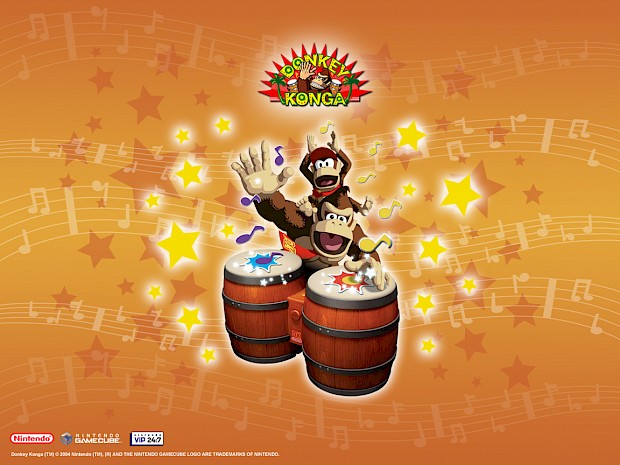
Posted 28 Apr 2016 by Joshua Phillips

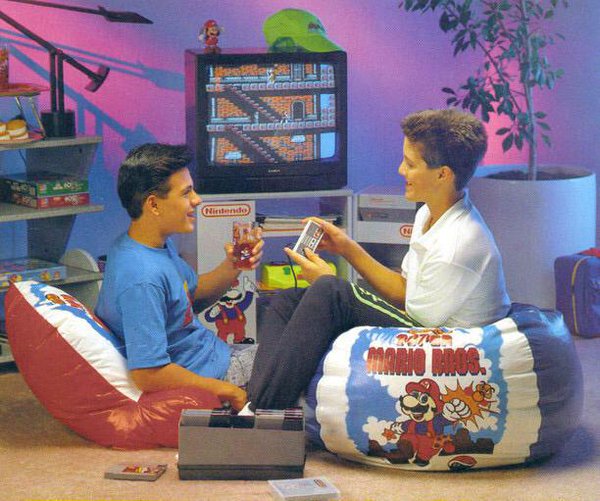 Donkey Konga was more than just a music game, it was a turning point for the world of DK. Find out what we think of his musical escapades as well as the turbulent journey to those bongo playing days.
Donkey Konga was more than just a music game, it was a turning point for the world of DK. Find out what we think of his musical escapades as well as the turbulent journey to those bongo playing days.
Kiddy Kong
Ever since I first played Donkey Kong Country 2 on the SNES I’ve always been a huge Donkey Kong fan, in fact, it’s what got me into gaming in the first place. I have an older brother and so my first gaming experiences were all thanks to him, and I’d play whatever we already owned. I dabbled in Street Fighter, played a fair amount of Super Mario All-Stars and a few quirky titles like Tiny Toons and Plok! but I never considered games as anything more than a casual pastime, they were just something to do, like watching TV or listening to music.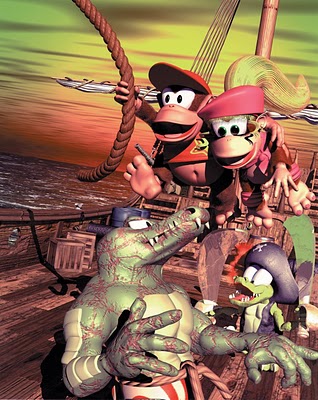 Anyway, when we got Donkey Kong Country 2, that’s when I truly fell in love with games. The Donkey Kong universe, with its rich characters, amazing world and fantastic music made me realise that games are more than just TV and music, they can take you to other worlds and let you experience them. Alas, the world of Donkey Kong just got better from there, and my passion for the series and characters involved grew ever more.
Anyway, when we got Donkey Kong Country 2, that’s when I truly fell in love with games. The Donkey Kong universe, with its rich characters, amazing world and fantastic music made me realise that games are more than just TV and music, they can take you to other worlds and let you experience them. Alas, the world of Donkey Kong just got better from there, and my passion for the series and characters involved grew ever more.
I went on to retroactively play the original Donkey Kong Country a few years after we had the second game thanks to borrowing it off a neighbour and I then got it on release day for the Gameboy Color, which meant I was playing Donkey Kong pretty much non-stop, anywhere and everywhere, at one point.
Diddy Kong
So, the Country games had blew my mind but what about the N64? Well completely out of the left field came Diddy Kong Racing, a title featuring my favourite character of the DK series, Diddy Kong, as front man. Not only that but it introduced us to the likes of Banjo and Conker, who would go on to feature in two very huge N64 outings. Diddy Kong Racing carried on the rich feel of the Country games, with fantastic music, worlds to discover and a feeling of a true universe filled with living, breathing beings and not just a series of levels.
Donkey Kong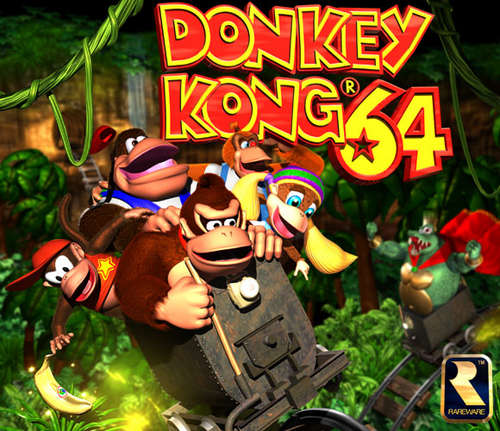 Then the big one, the title that changed everything, Donkey Kong 64. It’s hard to describe just how big a deal this game was at the time, as in retrospect it hasn’t aged as well as some of the other DK titles, but back then it was breaking boundaries for the N64 and was hard to believe it wasn't being played on an entirely new console. By far the biggest console game made on any system at the time, with massive worlds, tons of collectables, five playable characters and 200 Golden Bananas (the equivalent of Mario’s Stars and Banjo’s Puzzle pieces), it truly was a grand adventure, and expanded my love and appreciation for the series further than I could have ever imagined
Then the big one, the title that changed everything, Donkey Kong 64. It’s hard to describe just how big a deal this game was at the time, as in retrospect it hasn’t aged as well as some of the other DK titles, but back then it was breaking boundaries for the N64 and was hard to believe it wasn't being played on an entirely new console. By far the biggest console game made on any system at the time, with massive worlds, tons of collectables, five playable characters and 200 Golden Bananas (the equivalent of Mario’s Stars and Banjo’s Puzzle pieces), it truly was a grand adventure, and expanded my love and appreciation for the series further than I could have ever imagined
Beyond the games
As a kid I was obsessed with beanie babies and camp pop music, I was probably the coolest kid in my school. Alas, the few times I did have time off in primary school, I'd be so pumped for the 2pm showing of the Donkey Kong Country TV series. A CGI based musical show about Donkey Kong? It's like it was made for me.
As far as beanie babies are concerned, I managed to get the most mind blowing of all, a DK one. There was an advert in one of the N64 gaming magazines showing off Donkey Kong beanie toys, not just any but the whole DK cast, even the likes of Funky and Kiddy were in there. As a kid with no income I was allowed to order just one and so our beastly main man DK was the order I went with. It took absolutely ages, I mean, months and months of me hurrying to the door every day desperately hoping it would be in the post. One magical day, it finally arrived and I held onto that thing for years, taking it to school (probably a bit lame even for someone in Year 4) and having pride of place on every Nintendo console I’ve owned, sitting atop the N64, then my GameCube, then balanced on the thin little Wii before finally sitting next to the Wii U, those damn curved edges meant he’d always fall off.
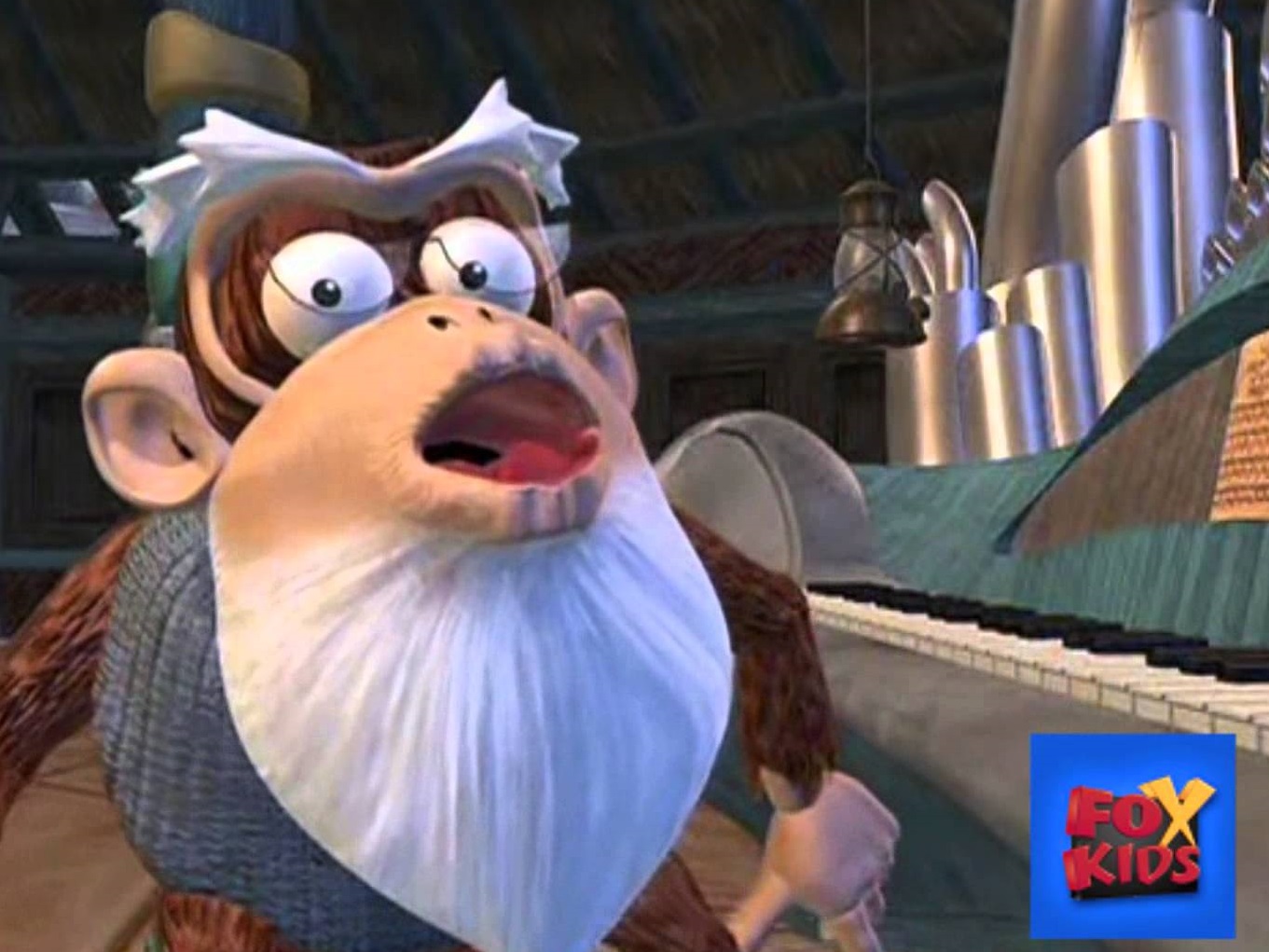
The end of DK as we know him?
I guess I’m rambling, but I’m rambling for a reason, I’ve cut this all down into a very condensed overview of just how obsessed I am with the world of Donkey Kong, and this honestly doesn’t even scratch the surface, I could probably write a book about it, but no one would want to read that. No, the reason I’m racing through my love of the world of Donkey Kong is that my favourite ever video game series was set to go into a very turbulent time in the 00’s.
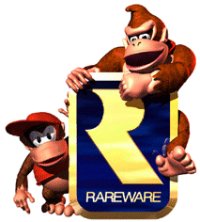
Pretty much every title aside from the original arcade and NES games had been developed by Rare and so when Rare were purchased by Microsoft for the Xbox in 2002 it wasn’t certain what would happen to our beloved ape. Sure, DK is owned by Nintendo so wouldn’t it just revert back to them? Well, in theory yes, but it’s far more complicated than that. The modern DK design we know today, with the tie and hair flick that first appeared in 1994, was designed by people at Rare, Steve Mayles to be specific. So would DK end up reverting back to the old arcade style?
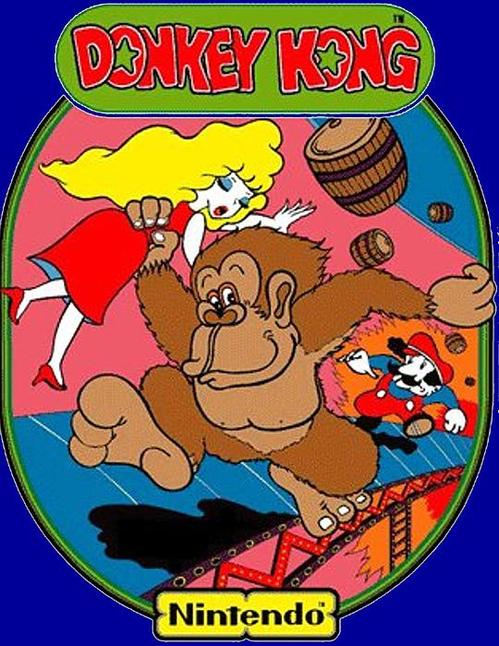 More importantly, every single aspect of the Donkey Kong series that we knew was developed by Rare up to that point, the characters, music, worlds and DK Isle itself. In fact, at this point the only non-Rare aspect of the Donkey Kong universe was the old design of Donkey Kong, Donkey Kong. Jr (who didn’t appear in the Rare titles) and the famous red scaffolding. The animal buddies, K.Rool, the entire extended Kong family such as Diddy, Dixie, Funky and Cranky were all created by Rare. Where did this leave the series and would Nintendo continue to use the now established world of DK? Would they even be allowed to?
More importantly, every single aspect of the Donkey Kong series that we knew was developed by Rare up to that point, the characters, music, worlds and DK Isle itself. In fact, at this point the only non-Rare aspect of the Donkey Kong universe was the old design of Donkey Kong, Donkey Kong. Jr (who didn’t appear in the Rare titles) and the famous red scaffolding. The animal buddies, K.Rool, the entire extended Kong family such as Diddy, Dixie, Funky and Cranky were all created by Rare. Where did this leave the series and would Nintendo continue to use the now established world of DK? Would they even be allowed to?
It wasn’t quite clear to the public and with the cancellation of GameCube launch title Donkey Kong Racing, things weren’t looking good and until 2003 we had complete silence regarding anything Donkey Kong related.
The DK universe lives on
Thankfully all that was put to rest in 2003 which was music to my ears... quite literally. Yes, whilst Rare had left, it seems that Donkey Kong was set to live on and to my glee the entire cast was intact but with a twist... they came with plastic bongos and a partnership between Nintendo and Namco was born.
Anything you can do, DKan do better
One thing that I’ve always loved about the Mario series is the party atmosphere certain games have and seeing characters in a different light. In a similar vein to musical episodes of TV shows and watching bloopers and outtakes, seeing characters outside of their traditional roles can really add depth to them. In Mario Galaxy, the ending is so dramatic as you face off against Bowser, literally jumping from planet to planet with extreme opera music playing until you manage to pound him into a burning lava pit, killing him and creating Dry Bowser. After that though, all is forgiven and you can find them both happily racing side in Mario Kart, or playing Table Tennis together in Mario & Sonic at the Olympics. Donkey Kong himself aside, who appears in the Mario spin-off titles, we never get to see the likes of Dixie or Wrinkly Kong ‘out of character’ and in a fun party setting, and as a fan of both party games and Donkey Kong, it’s one aspect of the Donkey Kong universe that always fell a bit flat for me – though the multiplayer and mini-game options in DK64 went a long way to rectifying that. So I was more than happy to embrace this new party focus for Donkey Kong.
Donkey Konga
So, Donkey Konga arrived and was the first main-line DK game that wasn’t a platformer and also the first in 10 years developed without Rare. Donkey Konga gave you a set of bongo’s and tasked you with drumming and clapping to music by following on-screen icons.
Up until the GameCube days, licensed music was pretty much unheard of in Nintendo games and even then it was pretty rare. If licensed music was to appear anywhere, it was generally in a third-party release like a Tony Hawk’s game, so to see it in a Donkey Kong game was almost unreal.
Not only was Donkey Kong featuring in a party title, but he was jamming along to songs by The Jackson 5, Blink 182, Good Charlotte and Pink. It was bizarre, exciting, sometimes cringe worthy but always a lot of fun. It’s the perfect example of what I mean when I always say that Nintendo really let loose in the GameCube era and weren’t afraid to try new ideas, even for some of their most beloved franchises.
With a pair of really well made controllers, you’ll find yourself drumming to the beat of Donkey Kong music, classical, pop and rock with Banana Birds, a dancing K.Rool and calming beach backdrops. As a music game aficionado with my fair share of plastic guitars, DJ decks, maracas and microphones, I can say wholeheartedly that the DK Bongo’s are the highest quality and most fun to play of the lot - I’ve put so many hours into Donkey Konga, an absurd amount that would probably only be acceptable for some huge RPG, but even after over 10 years of banging those bongos like the real instrument, they hold up fine even now.

This game was unique in not only its control style but the concept in general. Music games were a pretty new concept back then, and DDR aside, we hadn’t seen much, especially in the form of rhythm games. Donkey Konga was the first of its kind in the west, taking inspiration from Namco's successful Japanese series of rhythm games Taiko no Tatsujin, pre-dating even Guitar Hero. Considering they didn’t have many other games of this kind to draw inspiration from, they did a great job with their initial title, with different coloured symbols representing left, right or both bongos at once, and the rather genius addition of the ‘clap’ symbol, which required you to physically clap thanks to the built in microfone.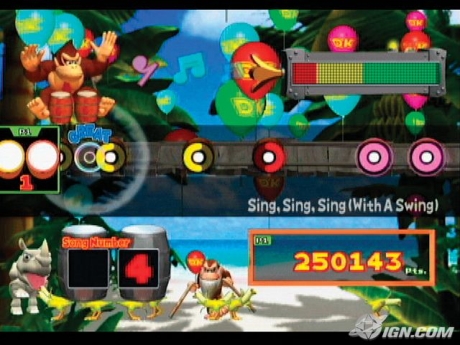 Donkey Konga offered 3 difficulty modes, Monkey being a breeze for beginners, requiring minimal bongo hits at a fairly slow pace, Chimp ramping up the pace and Gorilla giving you an onslaught of symbols at break-neck speed that, if pulled off correctly, will have you drumming to the beat like a professional bongo master, if such a thing exists.
Donkey Konga offered 3 difficulty modes, Monkey being a breeze for beginners, requiring minimal bongo hits at a fairly slow pace, Chimp ramping up the pace and Gorilla giving you an onslaught of symbols at break-neck speed that, if pulled off correctly, will have you drumming to the beat like a professional bongo master, if such a thing exists.
All of the songs are unlocked from the start, but you have to unlock the Gorilla versions of them by collecting coins from your street performances, getting more money the better you perform. As well as those, you could buy new sound effects for your bongos. Sick of the normal bongo sounds? Why not make your bongo let out cat noises, wedding bells, electric drum noises or... Japanese kids screaming? Indeed, the sound effects are super weird and make even the best bongo player sound awful but they can be hilarious as well as incredibly headache-inducing.
Mini-games are also present here, which require you to pay per play using your in-game coins as you play whack-a-mole with your bongos or climb vines with each side of the bongo being a corresponding DK arm.
If you're a true bongo master you can also try out challenge mode which plays 6, 12, or the entire song list one after another with no breaks and no life refills, just you and your bongo skills, lasting for as long as possible before your health bar goes down from missed or badly timed notes.
Pumping on Your Stereo
Indeed, the gameplay is fantastic, and given the design of the controller, is still the most fun rhythm game I have played by far but it hasn’t aged quite so well as far as the soundtrack is concerned. As I said initially, this is one of the the first games of its kind, so in 2003 it was awesome to have a bunch of real music tracks to play along to. Now though, after years of being spoiled by the wonderful Guitar Hero games, with their slew of tracks by official artists and seemingly endless stream of DLC, the track selection in Donkey Konga feels a bit short and whilst some covers are fine, others wouldn’t sound out of place in an open mic night at your local pub.
World Music
The initial release of Donkey Konga was fantastic and led the way to the videogame music revolution seen in the 00’s with its vast array of guitars, drum kits and microphones but going back to play it now you’ll find yourself running out of songs you want to play fairly quickly.
The original Donkey Konga is just the start though. Whilst I loved it for its awesome gameplay, when Donkey Konga 2 arrived a year later with all of its rock music, Donkey Kong Country 2 references and awesome theme song, I was truly bowled over and once I’d imported every version of Donkey Konga (as each region had a different track list) there was no escaping the world of plastic bongo bashing.
To this day, Donkey Konga is still a regular when friends come over but not so much the original title. The original title did a great job of introducing us to the concept and reassuring us that the Donkey Kong brand was alive and well but falls short now thanks to its limited soundtrack. Donkey Konga 2 onwards though, with its three different versions and the Japanese only Donkey Konga 3 – That’s where it’s at... but we’ll need another Throwback for something that special. Be sure to come back next week to find out why I truly love the Donkey Konga games so much, as we take a look at the UK, US and Japanese versions of Donkey Konga 2 along with the final instalment in the Konga series, Donkey Konga 3.
